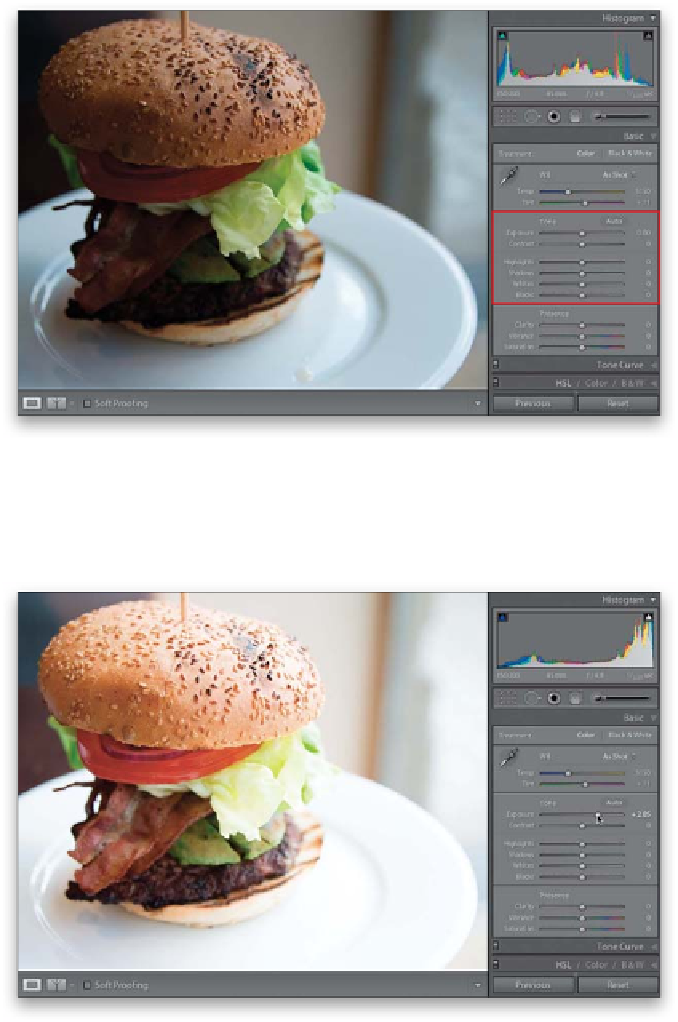Graphics Programs Reference
In-Depth Information
Now that your white balance is set, the next thing we adjust is our overall
exposure. Although there is an Exposure slider, it takes three sliders (and some-
times four) to set the overall exposure. Luckily, not only is this much easier
than it sounds, Lightroom has all kinds of tools to help make your job easier.
How to Set Your
Step One:
To set your overall exposure, you use the
Tone section of the Ba sic panel (that sec-
tion is shown within a red rectangle here).
The photo shown here looks underexposed,
and the plate it's sitting on looks kind of
dark and dingy, as well (the light is from
the window of the restaurant—Gourmet
Burger Kitchen in Oxford, England—and
this photo was taken just moments before
lunch. Man, that was a yummy burger,
even if it was underexposed).
Step Two:
To make the overall photo brighter, just
click-and-drag the Exposure slider to the
right, as shown here (just like with the
White Balance sliders, you get a visual cue
of which way to drag by looking at the
slider itself—white is on the right side of
the slider, so dragging right [toward white]
would make this adjustment lighter, and
dragging left [toward black] would make
things darker). Easy enough. However,
there's one critically important thing to
watch out for: if you drag too far to the
right, you run the risk of losing detail in
your highlights (in other words, your high-
lights get so bright that they literally “blow
out” and you lose all detail in those areas).
This is called “clipping” your highlights, and
luckily Lightroom not only warns you if
this happens, but in most cases, you can
also fix it.
Note:
If you upgraded to Lightroom 4, the
Exposure slider is now kind of a combina-
tion of the Exposure and Brightness sliders
from previous versions of Lightroom.
Continued




















